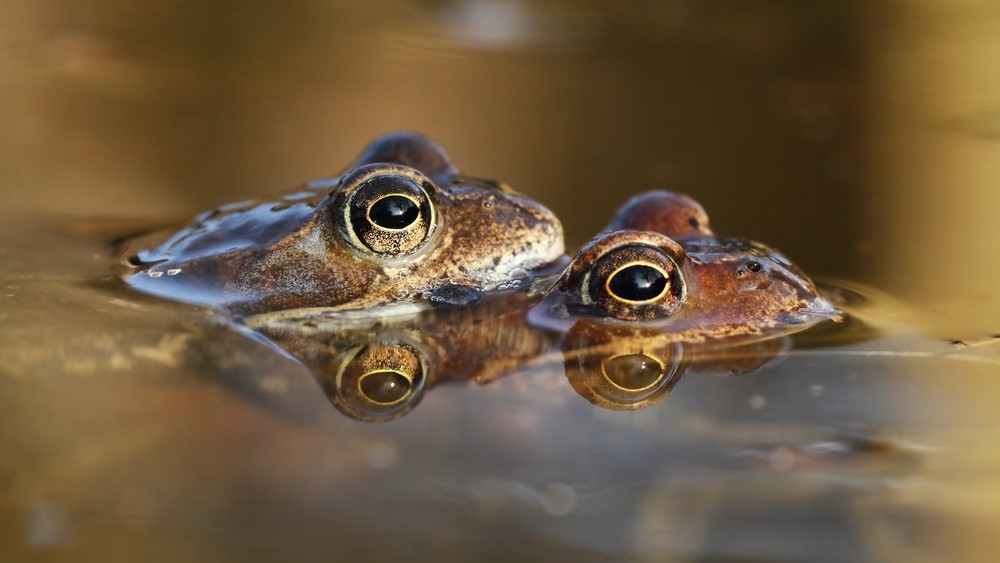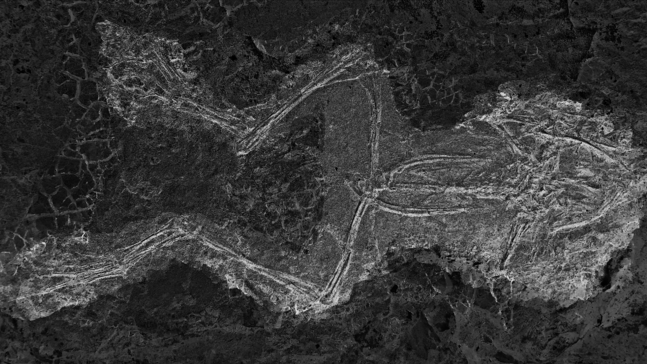'Ancient death trap' preserved hundreds of fossilized frogs that drowned during sex
Males likely pushed females underwater while mounting them.

It was a cold case with hundreds of victims. For decades, scientists puzzled over a gruesome mystery: What killed hundreds of fossilized frogs found at an ancient "death trap" in Germany dating to millions of years ago? These frogs seemed to be completely healthy when they died, but researchers recently determined that the amphibians may have drowned during aggressive underwater sex.
For the new study, scientists analyzed the remains of 168 frogs found at an old mining site in the Geiseltal valley, in central Germany's Saxony-Anhalt region. The specimens were originally collected between the 1930s and 1950s, along with around 50,000 other fossils. Around half of those were vertebrates, and included horse ancestors, large crocodiles, giant snakes and ground-dwelling birds, researchers said in a statement.
The fossilized frog bones date back to around 45 million years ago during the Eocene epoch; at the time, the site was a coastal swamp bordering the Palaeo-North Sea, which covered most of northern Germany. Chemical conditions within the swamp delayed the decay of dead organisms until they could be fossilized by minerals in the water, which preserved the paleontological "treasure trove" of specimens, according to the statement.
Analysis of the bones revealed that the frogs weren't killed by predators or disease. Through the process of elimination, the scientists concluded that the most likely cause of death was mating, as male frogs in species alive today are known to sometimes hold females under the water as they mount them, causing the females to drown. "By studying the bones of the fossil frogs we were able to narrow down the options of death," lead study author Daniel Falk, a paleontologist at University College Cork in Ireland, told Live Science in an email. "The only explanation that makes sense is that they died during mating."
Related: Lost fossil 'treasure trove' rediscovered after 70 years
Other paleontologists had previously proposed that the frogs died due to extreme environmental changes such as flooding or drought. Another hypothesis suggested that the culprit was sudden oxygen depletion in the water, which would have affected the amphibians' ability to absorb oxygen through their skin, known as cutaneous respiration, and led to mass drownings.
However, the frog's bones showed evidence that the corpses floated after the animals died, which ruled out swamp desiccation, Falk said. "Frogs and toads will also migrate if water conditions in their pond are not suitable," which probably rules out oxygen depletion, he added. "There’s also no evidence that they were washed in during floods."
Get the world’s most fascinating discoveries delivered straight to your inbox.
Other causes of death, such as predation, disease, malnourishment or old age, would have left distinct signatures in the frog's remains, Falk said. This left mating as the most plausible cause of death for these fossilized frogs.

During mating, frog males mount females from behind and then climb on top of the female's backs. On land, this is not an issue for the females. But some species of frogs mate in water, which can force the females under the surface and drown them if the males take too long. This mating behavior is seen in some modern species of frogs — among certain species, it can be "very common," Falk said.
Drowning is more likely to happen when groups of males try to mate with a single female, forming what is known as a breeding ball, Falk said. "This often happens in species that engage in mating congregations during a short explosive breeding season," he explained. It's possible that this is what took place tens of millions of years ago with the Geiseltal frogs, who may have migrated to the swamps once a year for mass breeding, he added.
However, researchers were unable to determine the gender of the frogs from just their bones, so there is no way to determine if the fossilized frogs are all female, Falk said. This makes it impossible to definitively prove their hypothesis.
Several other sites around the world that date to different time periods also preserve fossils from seemingly healthy frogs in which the causes of death are uncertain. The team suspect that frogs at these sites may also have drowned during sex, which hints the phenomenon is far more prevalent in ancient frog populations than once thought. "This suggests that the mating behaviors of modern frogs are really quite ancient and have been in place for at least 45 million years," Falk said.
This poses another potential mystery: After millions of years of frog evolution have elapsed, why are females still drowning during sex? For species who still procreate this way, the benefits of mating in water must outweigh the costs — but it's unclear how.
The researchers suspect that further study of how these fossilized frogs died could reveal clues about amphibian evolution and how amphibians have adjusted as their ecosystems changed over time. "If we understand how and why these frogs died so long ago, we can learn to protect not only modern frogs, but also learn how ecosystems evolve and how animals adapt in a variable environment," Falk said.
The study was published online July 5 in the journal Papers in Palaeontology.
Originally published on Live Science.

Harry is a U.K.-based senior staff writer at Live Science. He studied marine biology at the University of Exeter before training to become a journalist. He covers a wide range of topics including space exploration, planetary science, space weather, climate change, animal behavior and paleontology. His recent work on the solar maximum won "best space submission" at the 2024 Aerospace Media Awards and was shortlisted in the "top scoop" category at the NCTJ Awards for Excellence in 2023. He also writes Live Science's weekly Earth from space series.
